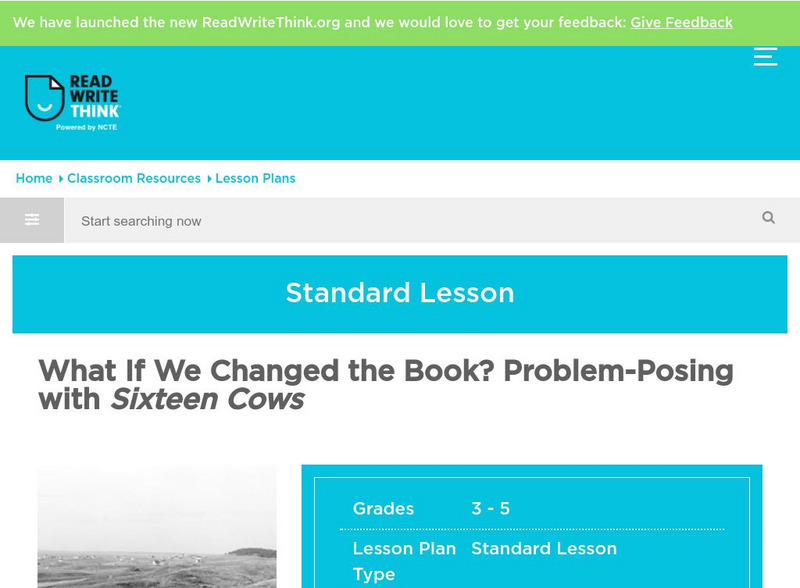Curated OER
How Things Fly
Students observe photographs of selected twentieth-century aircraft at the National Air and Space Museum and note differences in the design of aircraft wings, fuselages, and engines.
Curated OER
Build a Snowplow
Students design and build a snowplow using LEGO materials. They compete in an Engineer's Challenge to clear a path through Styrofoam peanuts.
Curated OER
TE Activity: Tears in Rain
Students examine photographs before writing captions for them. They develop visual literacy as they see how photographs are manipulated to show the effects of acid rain. They rewrite the photo captions after a class discussion.
Curated OER
Native Americans at Rose Bay
Young scholars examine the Timken Native Americans of the 1400s and their culture of hunter-gatherers. They study the necessary vocabulary using a number of activities.
Curated OER
Electrical motors
Students investigate and experiement with a 9-volt motor. They will use the connecting wire and battery pack to discover fans.
Curated OER
Spy on a Spider
Students view slides or live specimens to name and describe the distinguishing features of groups of arthropods, especially spiders and insects. They complete worksheets, observe webs and then search for and record where spiders can be...
Curated OER
Creatures from Planet X: Spiders
Students are given a description of some fascinating animals from "Planet X". They follow the descriptions given to illustrate one of these animals paying careful attention to introduced vocabulary such as 'appendages', 'receptors', and...
Curated OER
How Things Fly
Students, by drawing on their own experiences, discuss and examine the basic physics of flight. They participate in a variety of activities regarding flight.
Curated OER
Community Action
Fifth graders brainstorm a list of decisions that students make daily that affect the welfare of the environment categorizing them as being either helpful or harmful. They then trace local actions to distant consequences to determine how...
Curated OER
Enigmas
Students research "mystery" topics such as Easter Island, Bermuda Triangle and the Loch Ness Monster. Students brainstorm mysteries and explore the one of their choosing. They write a short report and share what they have learned with...
Curated OER
Habitats: Rainforest
Students use the internet to find reasons the rainforest is endangered and ways that affects the rest of the world. They read for information, perform experiments, locate rainforests on maps, and write about this ecosystem.
ReadWriteThink
Read Write Think: Bridging Literature and Mathematics
Contains plans for five 50-minute interdisciplinary lessons that ask students to write about math-related, informational books such as "Actual Size" (Jenkins, 2004) and "If You Hopped Like a Frog" (Schwartz, 1999). Students use books...
PBS
Pbs Mathline Lesson: Mix It Up [Pdf]
A lesson based on the story, "Oliver's Fruit Salad," where students explore the concept of proportional reasoning through modeling, student sharing, and questioning. A great introductory lesson for this concept that is sure to engage...
Scholastic
Scholastic Lesson Plan: Simple Ways to Assess Math Sense
This site has two lesson plans are presented by Marilyn Burns and associates that use children's literature to help assess math sense. One lesson plan is for use with primary students while the other is for use with intermediate students.
National Council of Teachers of Mathematics
The Math Forum: Lesson Plan Non Standard Measuring
This is a short, fun lesson plan with a literature connection, "Miss Nelson is Missing". It uses candy bars as non-standard units for measuring objects in the classroom.
National Council of Teachers of Mathematics
The Math Forum: Lesson Plan Non Standard Measuring
This is a short, fun lesson plan with a literature connection, "Miss Nelson is Missing". It uses candy bars as non-standard units for measuring objects in the classroom.
Scholastic
Scholastic Lesson Plan: Alexander, Who Used to Be Rich..
This multipart lesson plan the cost of opportunities when you have limited resources. It uses the hilarious children's book, "Alexander, Who Used to Be Rich Last Sunday" by Judith Viorst to drive the lesson home.
PBS
Pbs Mathline: Button, Button Lesson Plan [Pdf]
An integrated math and language arts lesson focusing on statistics. Young scholars explore the concepts of estimation, data collection, data analysis, classification, graphing, and counting through the reading of the Button Box by...
PBS
Pbs: Mathline: Tessellations Wow! [Pdf]
An integrated geometry lesson on spatial sense in which students identify and use different shapes to create a tessellation. "Through a variety of modalities such as writing, music, art, poetry, and literature, students are introduced to...
ReadWriteThink
Read Write Think: What if We Changed the Book? Problem Posing With Sixteen Cows
After reading a piece of math-related children's literature aloud, students pose and solve new problems by asking what-if questions about the events in the story.
SEDL
Sedl: Five Senses
Elementary students will gain great insight into the workings of our five senses through this collection of detailed, integrated lesson plans for grades K-3. Each lesson contains a list of needed materials, hands-on explorations...
Discovery Education
Discovery Education: Stories From Africa
At the end of this lesson, students will have a better understanding of the size of the African elephant. This could be used in an animal science unit, a measuring unit in math, an extension to literature, or for social studies...
Alabama Learning Exchange
Alex: Explorations in Place Value
Explorations in Place Value is an interactive math mini-unit that incorporates the use of children's literature, mathematical learning stations, and small group instructional strategies to reinforce basic principles of place value and to...

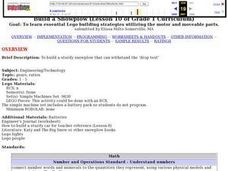




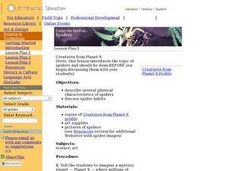




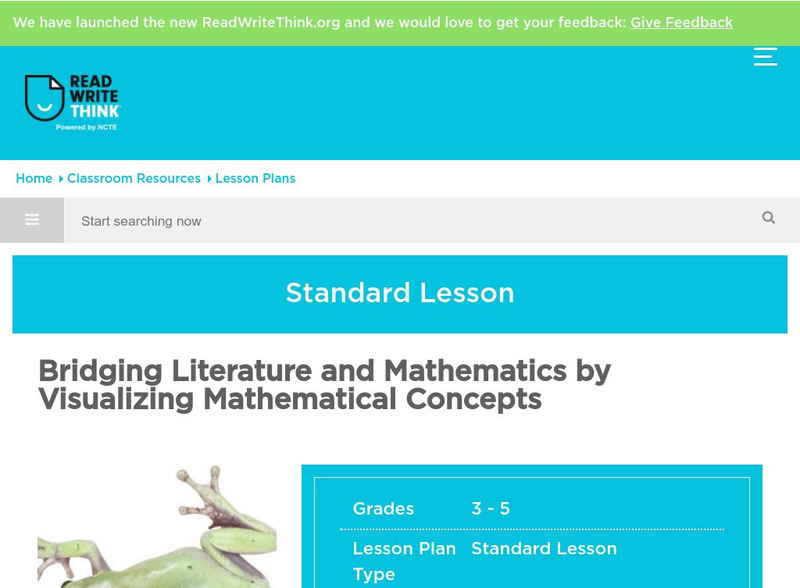
![Pbs Mathline Lesson: Mix It Up [Pdf] Lesson Plan Pbs Mathline Lesson: Mix It Up [Pdf] Lesson Plan](https://content.lessonplanet.com/knovation/original/114249-5c08953e64aa805320eac921a29839e3.jpg?1661409096)



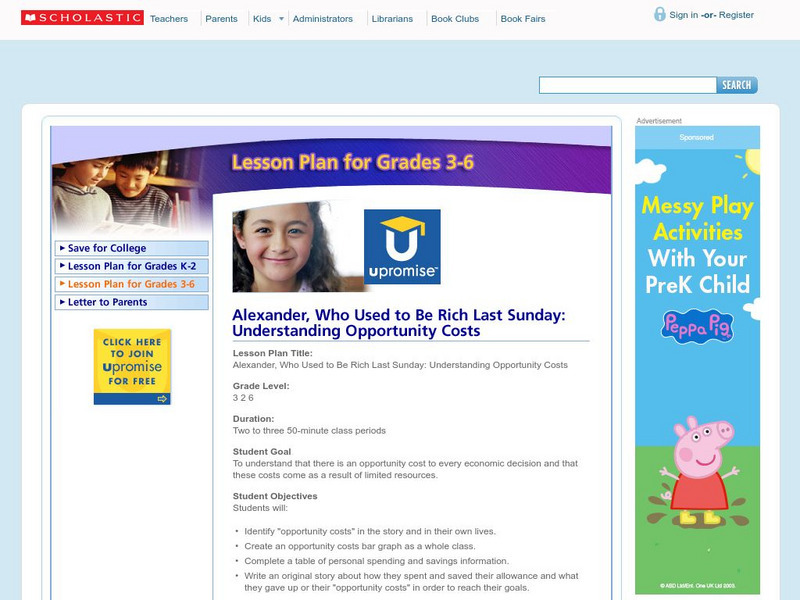
![Pbs Mathline: Button, Button Lesson Plan [Pdf] Lesson Plan Pbs Mathline: Button, Button Lesson Plan [Pdf] Lesson Plan](https://d15y2dacu3jp90.cloudfront.net/images/attachment_defaults/resource/large/FPO-knovation.png)
